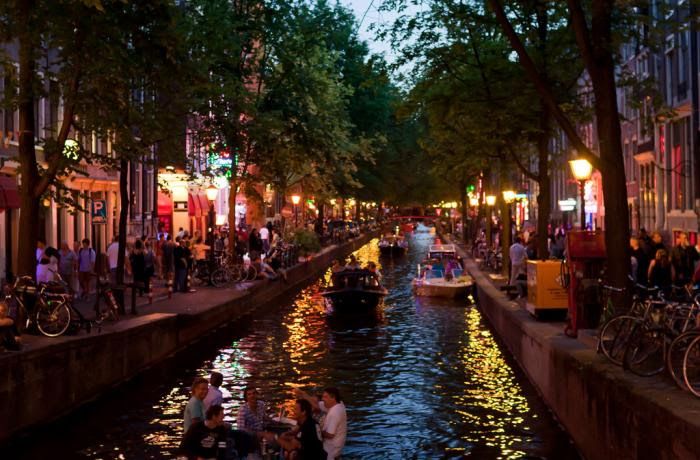TWO VIEWS ON PROSTITUTION
Europe is divided by two radically different approaches to prostitution—and how best to protect sex workers. There’s the Dutch model—full legalization complete with health insurance and medical check-ups; but lately it is the Swedish model, which bans the buying but not the selling of sex, that has been gaining traction. Pulitzer Center grantee Michelle Goldberg traveled to the Netherlands and Sweden to look at both sides of the debate.
“After talking to sex workers, politicians, cops, activists and others, my uncomfortable conclusion is that both narratives about European prostitution are true. The answer to the question of which law better protects women—full legalization or the criminalization of demand—is as much ideological as empirical,” writes Michelle in a nuanced and thought-provoking feature for The Nation. “It depends on how much regulation you’re willing to accept in the name of gender equality, and ultimately whether you think making it harder for some prostitutes to work is a worthwhile price to pay for reducing the number of women in prostitution overall.”
THE WISDOM OF MONKS
Award-winning filmmaker and Pulitzer Center grantee Kalyanee Mam returned to her native Cambodia to produce this visually exquisite New York Times “Op-Doc” about a group of Buddhist monks who are trying to block the government’s ambitious but environmentally questionable plan to build a network of 17 dams.
“I fear this David and Goliath battle will end tragically, unless significant pressure is placed on…the Cambodian government to either abandon the project or make good-faith efforts to involve threatened communities and conservation groups in the planning process, “ Kalyanee writes in the Times. “While development is essential to the future of Cambodia, the destruction of national treasures like the Areng Valley will make that future far bleaker.”
THE CURSE OF TURKANA
Lake Turkana, the world’s largest desert lake, stretching from the southern border of Ethiopia down into Kenya’s arid north, is also the planet’s oldest landscape known to have been inhabited by modern man. Pulitzer Center grantee Jessica Hatcher notes that in addition to “the skeletons, skulls, tools and teeth of our forefathers—explorers have found another prized commodity: oil, a symbol of wealth and progress, but one that always comes at a cost.”
Jessica, along with videographer Marc Hofer and photojournalist Guillaume Bonn, is in Kenya looking at a range of environmental and economic issues that threaten this historic cradle of humankind. In a report for The Guardian, Jessica notes an alarming rate of malnutrition among inhabitants of the lake region and a sharp spike in cattle raiding.
Until next week,
Tom Hundley
Senior Editor
